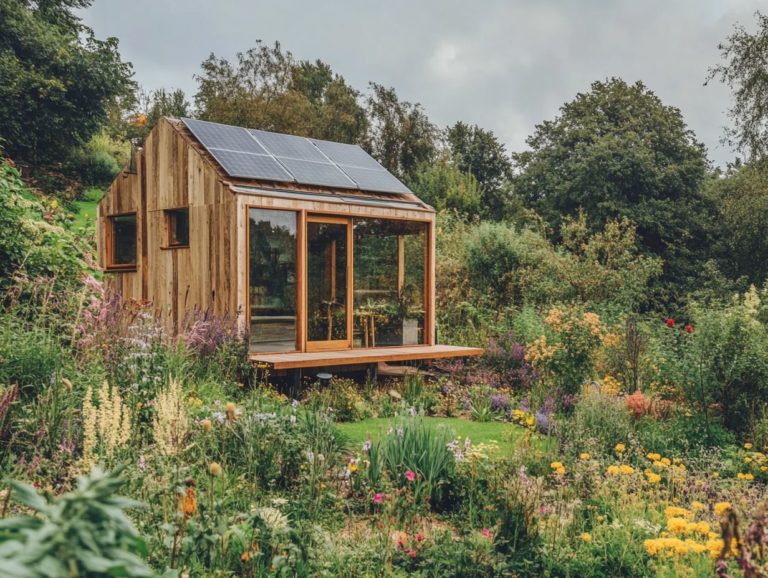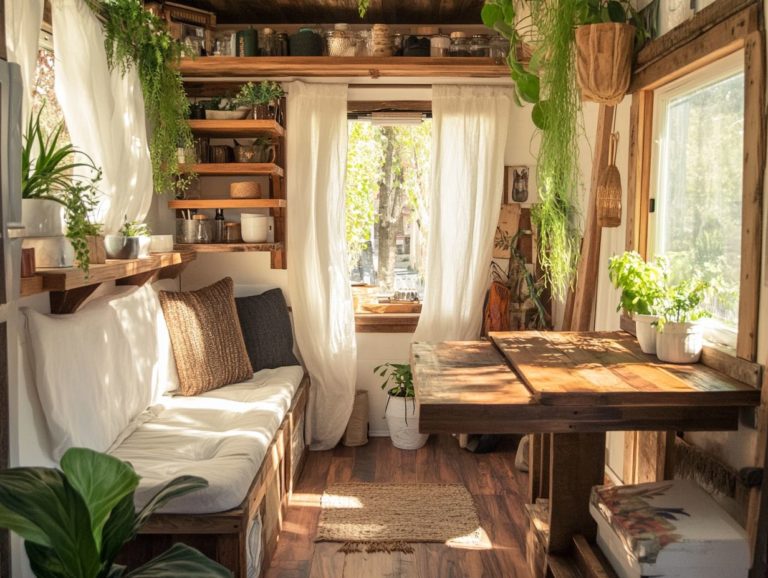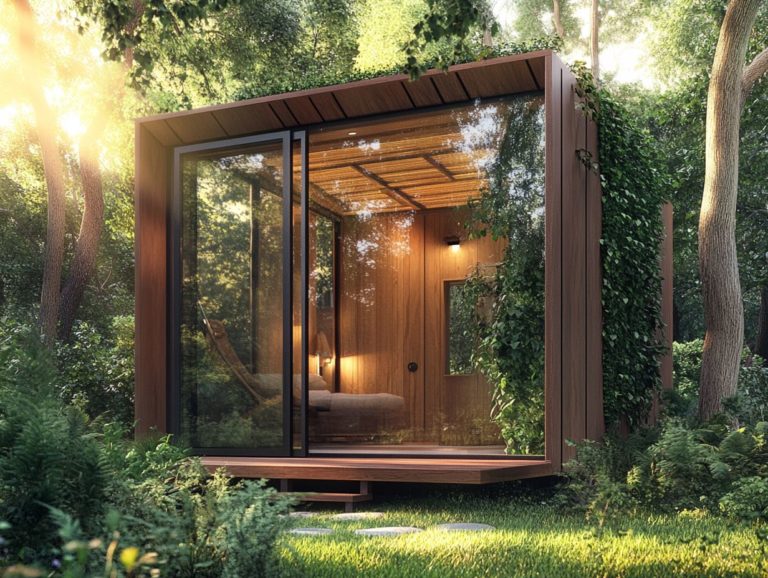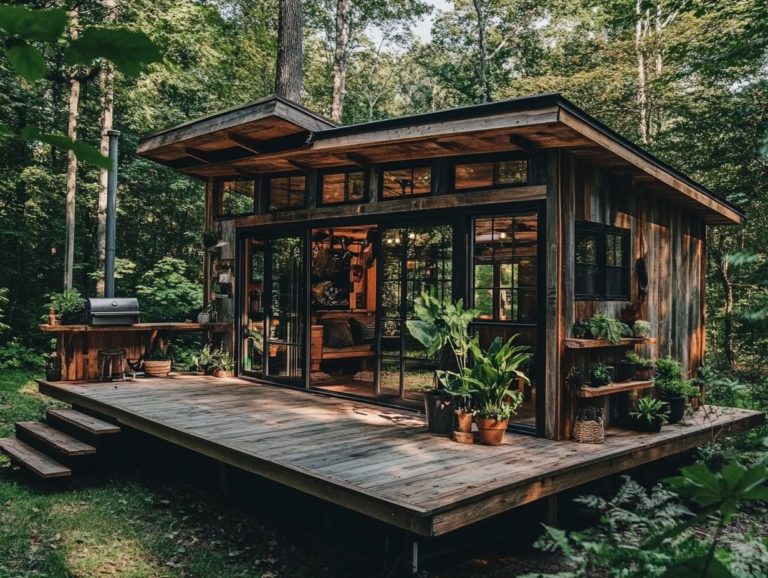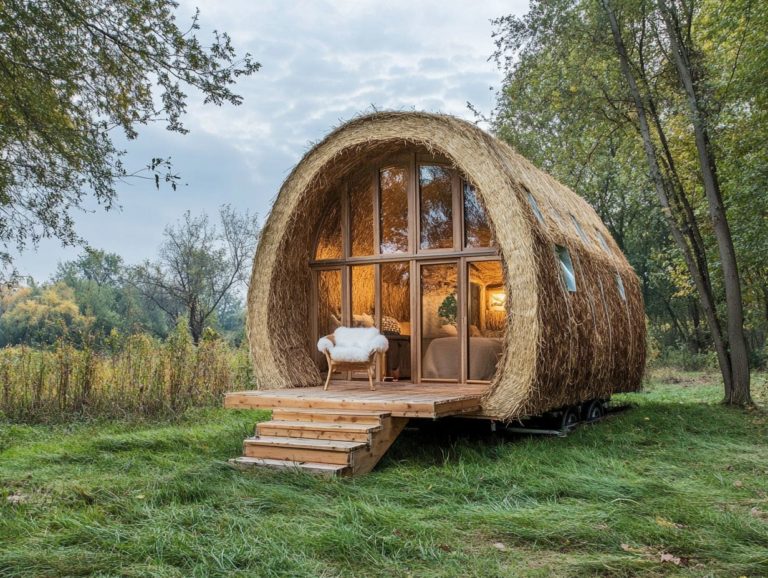How to Source Sustainable Materials for Your Tiny Home
In your quest for a simpler, more sustainable lifestyle, tiny homes have emerged as a popular solution. However, building or renovating a tiny home goes beyond size; it s about making environmentally friendly choices.
This exploration highlights the significance of using sustainable materials, showing how they benefit both the environment and your experience as a homeowner. You ll discover eco-friendly options, sourcing tips, and practical advice for seamlessly incorporating these materials into your design.
The goal is to ensure your tiny haven is not only aesthetically pleasing but also truly sustainable.
Contents [hide]
- Key Takeaways:
- The Importance of Sustainable Materials for Tiny Homes
- Types of Sustainable Materials
- Where to Source Sustainable Materials
- Tips for Incorporating Sustainable Materials in Your Tiny Home
- Maintaining and Upgrading Sustainable Materials
- Frequently Asked Questions
- What are some tips for sourcing sustainable materials for my tiny home?
- Where can I find sustainable insulation for my tiny home?
- How can I ensure the flooring in my tiny home is sustainable?
- Are there sustainable options for windows and doors in tiny homes?
- What are the benefits of using sustainable materials in my tiny home?
- How do I know if a material is truly sustainable?
Key Takeaways:
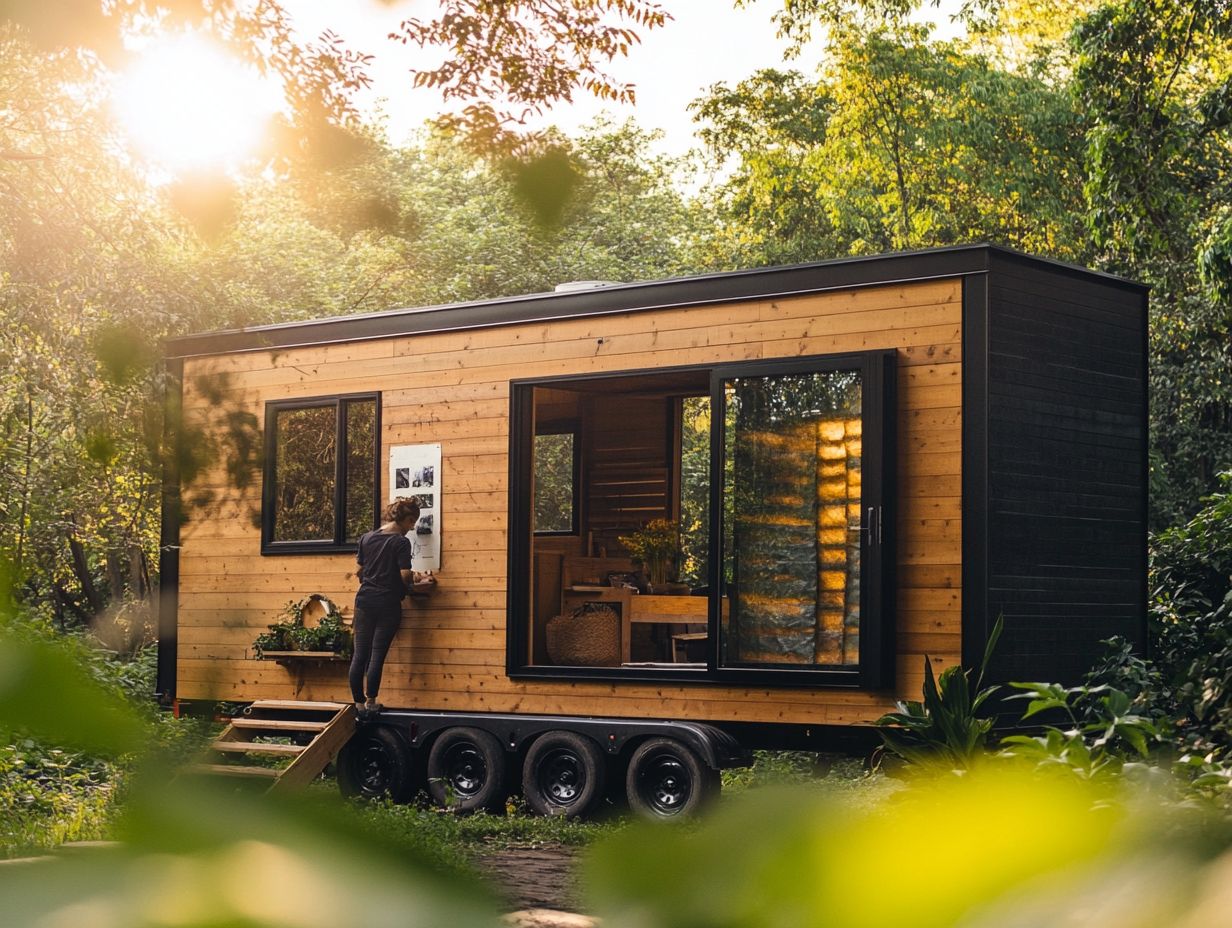
- Consider the benefits of sustainable materials for both the environment and homeowners when building or renovating a tiny home.
- Explore eco-friendly options and compare their cost and durability to traditional materials before making a decision.
- Look for local suppliers and use online resources to source sustainable materials, keeping long-term sustainability in mind for maintenance and upgrades.
The Importance of Sustainable Materials for Tiny Homes
Sustainable materials are essential for tiny homes. Eco-friendly choices not only promote sustainable living but also significantly reduce your home s overall carbon footprint. Using recycled materials and renewable energy sources shows environmental stewardship while providing a low-maintenance lifestyle.
Choosing reclaimed wood and other sustainable materials elevates the aesthetic appeal and enhances functionality. Tiny homes can be an irresistible choice for anyone looking to live responsibly!
Benefits for the Environment and Homeowners
Utilizing sustainable materials in tiny homes offers numerous benefits for both the environment and your living space. By embracing eco-friendly options, you help reduce your carbon footprint while promoting a healthier home environment.
When you choose sustainable materials, you’re conserving resources and enhancing your energy efficiency. This leads to lower utility bills and less dependence on non-renewable energy sources. Incorporating high-efficiency appliances can amplify these savings, minimizing energy consumption while maximizing performance.
Integrating alternative energy sources like solar panels makes your tiny home even more self-sufficient, reducing its ecological impact. Ultimately, these choices encourage a lifestyle centered on well-being, as using the best materials for tiny house construction improves indoor air quality and fosters a healthier living environment.
Types of Sustainable Materials
When considering sustainable materials for your tiny home, you’ll find a wealth of eco-friendly options each vital for nurturing a greener environment and fostering a more efficient lifestyle.
From recycled materials to reclaimed wood and natural insulation, these selections demonstrate your commitment to reducing waste and championing sustainability. Exploring sustainable design practices for tiny houses can enhance these advantages, allowing you to choose low-maintenance materials that meet your needs while minimizing your environmental footprint.
Overview of Eco-Friendly Options
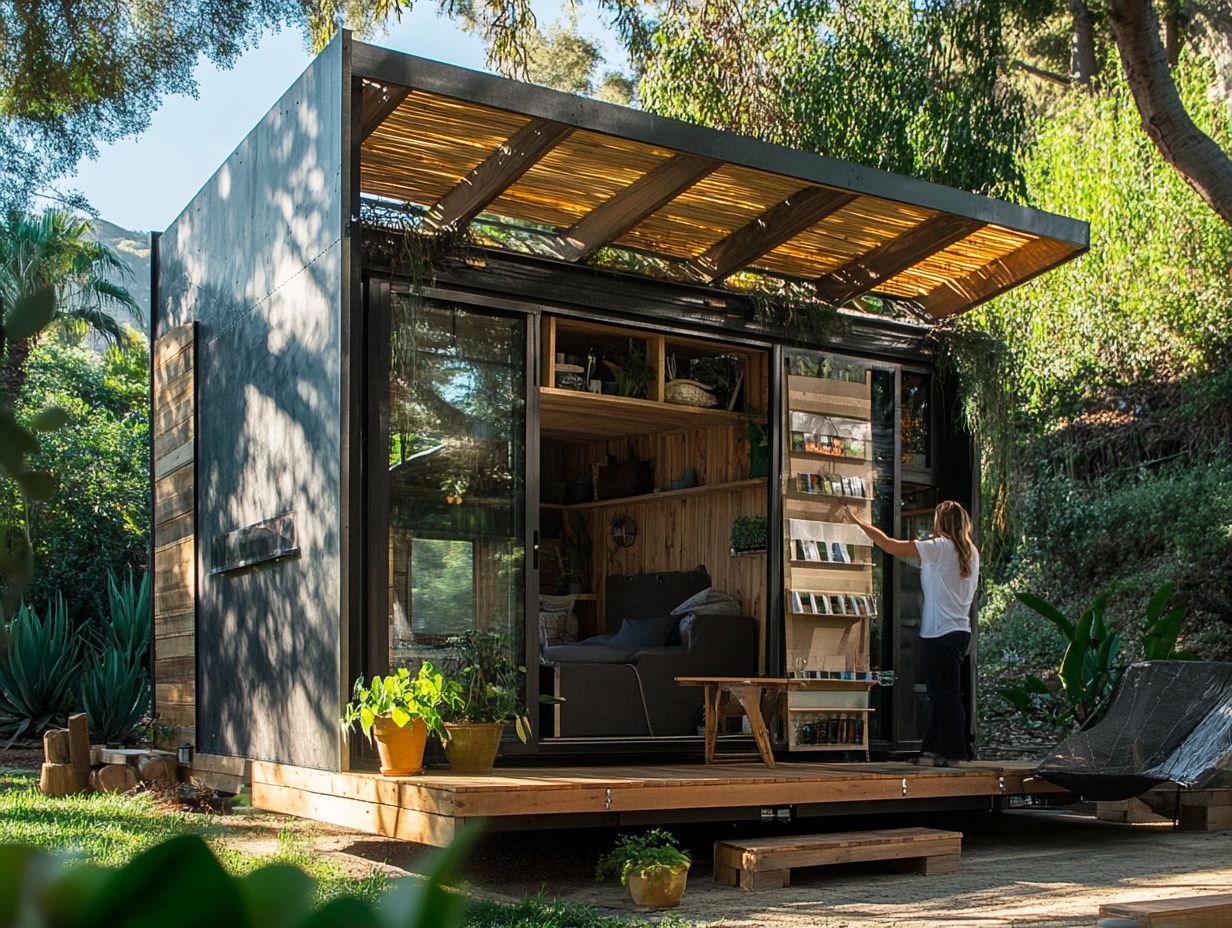
Eco-friendly options for tiny homes include a diverse selection of materials. You can use reclaimed wood, bamboo flooring, and various recycled materials that enhance both aesthetics and functionality.
For construction, rammed earth is an excellent option. By prioritizing sustainability and responsible sourcing, these materials minimize environmental impact and foster a healthier living space. Additionally, consider using reclaimed wood as a sustainable choice for tiny houses.
Reclaimed wood, often salvaged from old barns or factories, adds unique character and charm to your home while helping to combat deforestation. Bamboo is a rapidly renewable resource, making it a superb choice for flooring and cabinetry due to its fast growth.
Incorporating recycled materials like reclaimed bricks or repurposed metal allows for creative design elements. You can create accent walls or roofing. These choices not only support eco-conscious living but also offer durability and style.
With these materials, you can express your individuality while caring for the planet!
Comparison of Cost and Durability
When weighing the cost and durability of sustainable materials for your tiny home, it’s crucial to consider both the upfront expenses and the long-term savings associated with eco-friendly choices.
Investing in sustainable materials may require a higher initial outlay, but this can be balanced by substantial lifecycle savings. Reduced maintenance and replacement needs often result in lower overall costs.
The durability of these materials usually surpasses that of traditional options. Therefore, while the initial investment might seem steep, the overall longevity can lead to significant financial rewards.
You can further enhance value by integrating high-efficiency appliances into your design. These systems not only cut down on energy consumption but also lower your utility bills over time, making them a smart investment for those prioritizing sustainability without compromising on financial sensibility.
Where to Source Sustainable Materials
You can source sustainable materials for your tiny home through various channels. Explore options like local suppliers, online resources, and salvage auctions.
These avenues present a wealth of eco-friendly choices at competitive prices, allowing you to build your dream home while being mindful of the environment.
Local Suppliers and Online Resources
Local suppliers and online platforms are essential for accessing sustainable materials. Look for options like reclaimed wood and eco-friendly alternatives that are vital for your tiny home construction.
Building relationships with nearby suppliers can provide you with valuable local expertise and support while benefiting from lower transportation emissions.
Platforms like Etsy or specialized sustainable marketplaces can offer unique options you may not find in your area.
When searching for materials, consider attending community workshops or trade shows. These events can reveal hidden local gems and foster connections with others in the community.
Engaging on social media to join local eco-building groups can also lead to valuable recommendations and collaborative purchasing opportunities.
These strategies not only elevate the quality of your construction but also strengthen your community ties, reinforcing your commitment to sustainability!
Tips for Incorporating Sustainable Materials in Your Tiny Home
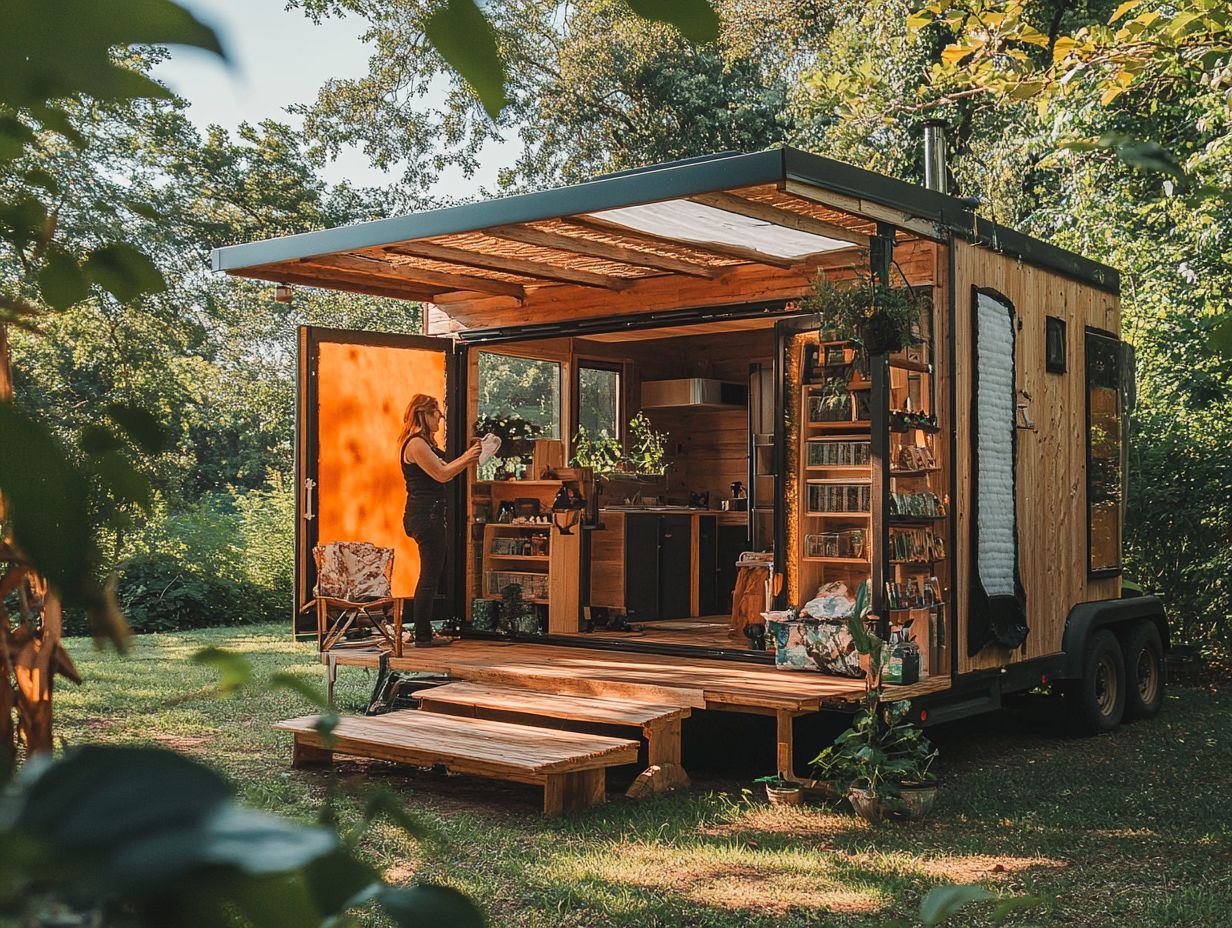
Incorporating sustainable materials into your tiny home requires thoughtful design choices. Be aware of how low-maintenance materials can elevate both functionality and aesthetic charm.
By selecting the right elements, you enhance the beauty of your space and create an environment that aligns with your values.
Key Design Tips for Sustainable Living
Design considerations are crucial in your journey toward effectively implementing sustainable materials. They enable you to create eco-friendly designs that maximize natural light and enhance energy efficiency.
Thoughtful layout choices facilitate optimal airflow and natural ventilation, allowing you to reduce your reliance on artificial heating and cooling systems. Orientation plays a vital role; position buildings to harness sunlight patterns to enjoy warmth during winter and shade in summer.
For example, larger windows on the south side can maximize passive solar gain (using the sun’s heat naturally), while smaller openings on the northern side help keep your space comfortable. Implement these design elements holistically to positively contribute to the environment and create pleasant, healthful spaces.
Maintaining and Upgrading Sustainable Materials
Maintaining and upgrading sustainable materials in your tiny home is essential for achieving long-term sustainability. This optimizes green maintenance practices that enhance both longevity and performance.
Long-Term Sustainability and Maintenance Tips
Ensuring long-term sustainability in your tiny home requires following maintenance tips that preserve the integrity of sustainable materials through green practices.
Regular inspections are essential, especially for components like natural insulation and high-efficiency appliances, as they significantly impact your energy use. Check for air leaks and ensure your insulation materials remain dry and intact. This not only helps keep your space comfortable but also reduces energy waste.
Schedule routine maintenance for your appliances like cleaning filters and verifying proper functioning to extend their lifespan and enhance their performance. These simple steps create a happier, healthier home while minimizing the need for replacements, epitomizing responsible sustainable living.
Frequently Asked Questions
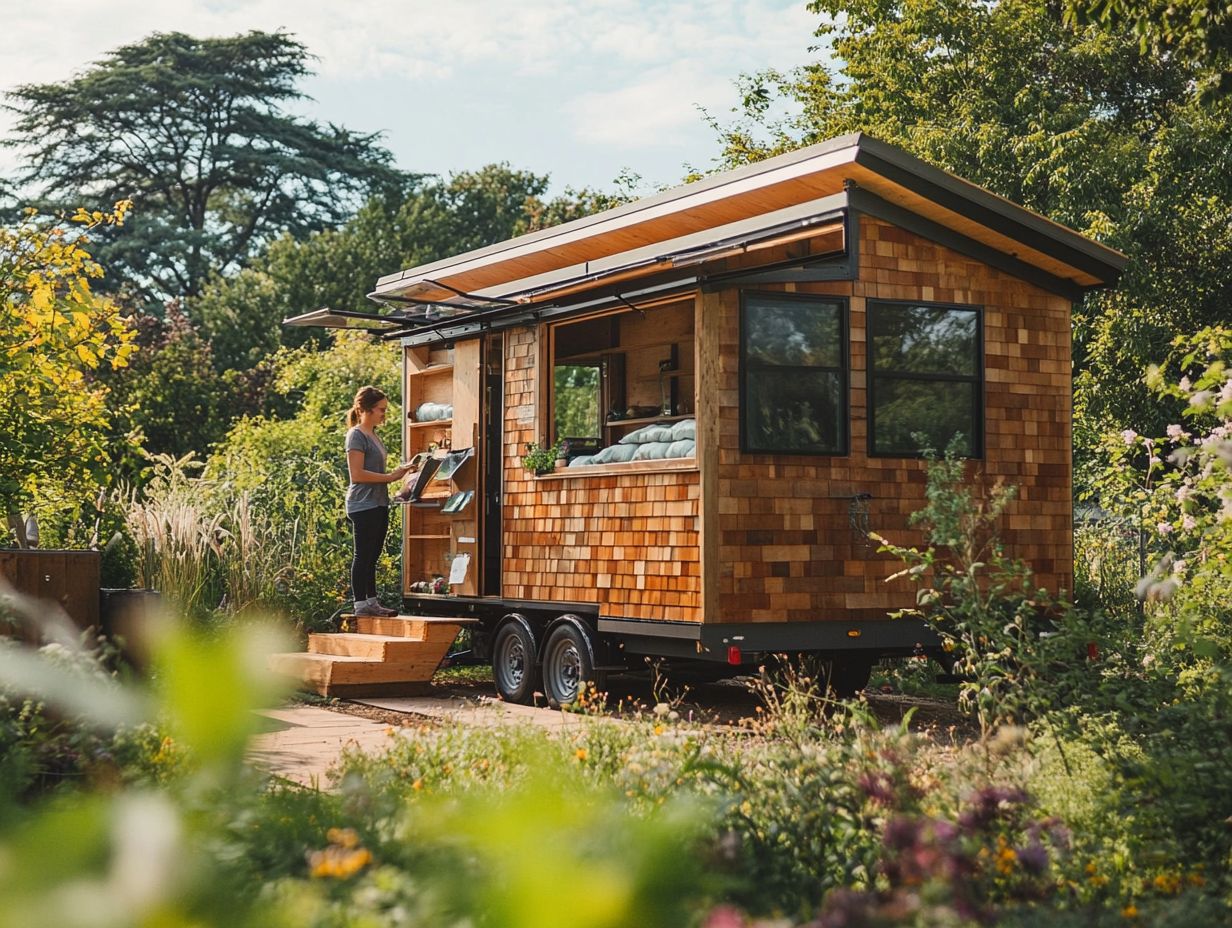
What are some tips for sourcing sustainable materials for my tiny home?
1. Look for materials made from recycled or repurposed sources. This cuts waste and supports reuse.
2. Consider using salvaged materials from local salvage yards or Habitat for Humanity ReStores. This reduces transportation’s carbon footprint and supports the local community.
3. Research sustainable building certifications like LEED or FSC to ensure your materials meet environmental and ethical standards.
Where can I find sustainable insulation for my tiny home?
1. Opt for natural insulation materials like wool, cotton, or hemp. These are non-toxic, renewable, and have a lower carbon footprint than traditional insulation.
2. Look for insulation made from recycled materials, such as recycled denim or newspaper. This reduces waste and utilizes materials that would otherwise end up in landfills.
3. Consider insulation that has been locally sourced to reduce transportation’s environmental impact.
How can I ensure the flooring in my tiny home is sustainable?
1. Choose flooring made from renewable resources like bamboo or cork. These materials are sustainable, durable, and easy to maintain.
2. Look for flooring made from recycled materials, such as recycled rubber or plastic. This helps reduce waste and supports the circular economy.
3. Research the manufacturing process of flooring to ensure it meets ethical and environmental standards.
Are there sustainable options for windows and doors in tiny homes?
1. Look for windows and doors made from sustainable materials like reclaimed wood or bamboo. These materials are eco-friendly and add a unique, rustic touch to your tiny home.
2. Consider using energy-efficient windows and doors to reduce your home’s energy consumption and save on utility bills.
3. Research companies that use sustainable practices and materials in manufacturing their windows and doors.
Start your sustainable journey today! Explore our resources to learn more.
What are the benefits of using sustainable materials in my tiny home?
-
Reduced environmental impact: Sustainable materials come from renewable resources. They help lower your home’s carbon footprint.
-
Healthier living space: Many sustainable materials are non-toxic. They don t release harmful chemicals, promoting a healthier home for you and your family.
-
Cost savings: Sustainable materials might cost more initially, but they last longer and need less maintenance. This leads to savings over time!
How do I know if a material is truly sustainable?
-
Research the material and its manufacturing process. Ensure it meets environmental and ethical standards.
-
Look for certifications like FSC (Forest Stewardship Council) or Greenguard. These indicate the material is sustainable.
-
Think about the material s lifespan. Can it be easily recycled or is it biodegradable?


